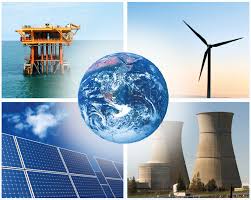Africa, Asia and Middle East driving global energy consumption since 1980s-EIA
Bukola Odufade is Businessamlive Reporter.
You can contact her on bukola.odufade@businessamlive.com with stories and commentary.
January 10, 20191.2K views0 comments
 Asia, Africa, and the Middle East have been identified as the biggest drivers of global energy consumption since the 1980s, thanks to strong economic growth, a quick population growth rate, and greater access to energy markets, according to recent data from the Energy Information Administration (EIA).
Asia, Africa, and the Middle East have been identified as the biggest drivers of global energy consumption since the 1980s, thanks to strong economic growth, a quick population growth rate, and greater access to energy markets, according to recent data from the Energy Information Administration (EIA).
The report revealed that between 2010 and 2016 alone, energy consumption growth in each of these regions boomed by about 20 percent, the new EIA data shows, especially in the Middle East and Africa, while in Asia, energy consumption grew strongly, too, and that’s despite a dip in demand from China between 2015 and 2016, the EIA also said.
An unsurprising fact the report also revealed was that crude oil and other petroleum liquids were the most commonly used fuel across the world as of 2016: as part of the energy mix it had the largest share in Central and South America, at almost 50 percent, with the Middle East a close second in its prevalent use of petroleum. Crude oil consumption as part of the total energy mix was the lowest in Eurasia, at a little over 20 percent.
In Asia and Oceania, at the same time, the biggest chunk in the energy mix belonged to coal, at about 50 percent. The region includes three of the biggest coal users globally: China, India, and Australia. However, the EIA notes that resource use often has a lot to do with the availability of certain resources, which partly explains China’s and Australia’s coal use while Europe, on the other hand, was the biggest user of nuclear power and renewable energy.
Read Also:
A breakdown of energy consumption growth patterns by country shows that China was the only one among the seven largest economies in the world that actually went through market energy consumption growth in the period between 2000 and 2016, EIA’s new data showed. It went up from about 40 quadrillion Btu in 2000 to a little under 140 quadrillion Btu by 2016 while the other six economies’ energy consumption remained relatively flat over the 16-year period.
